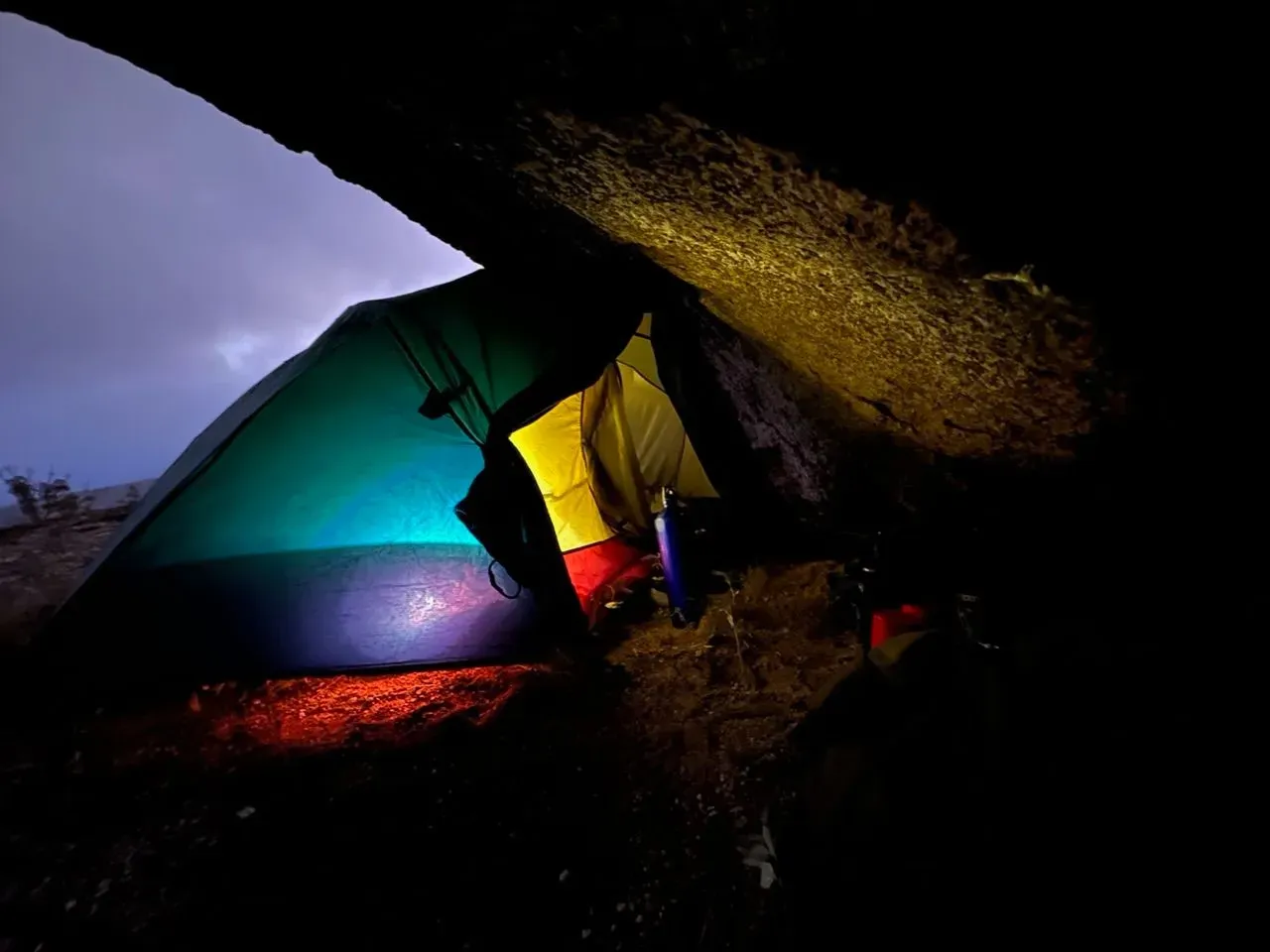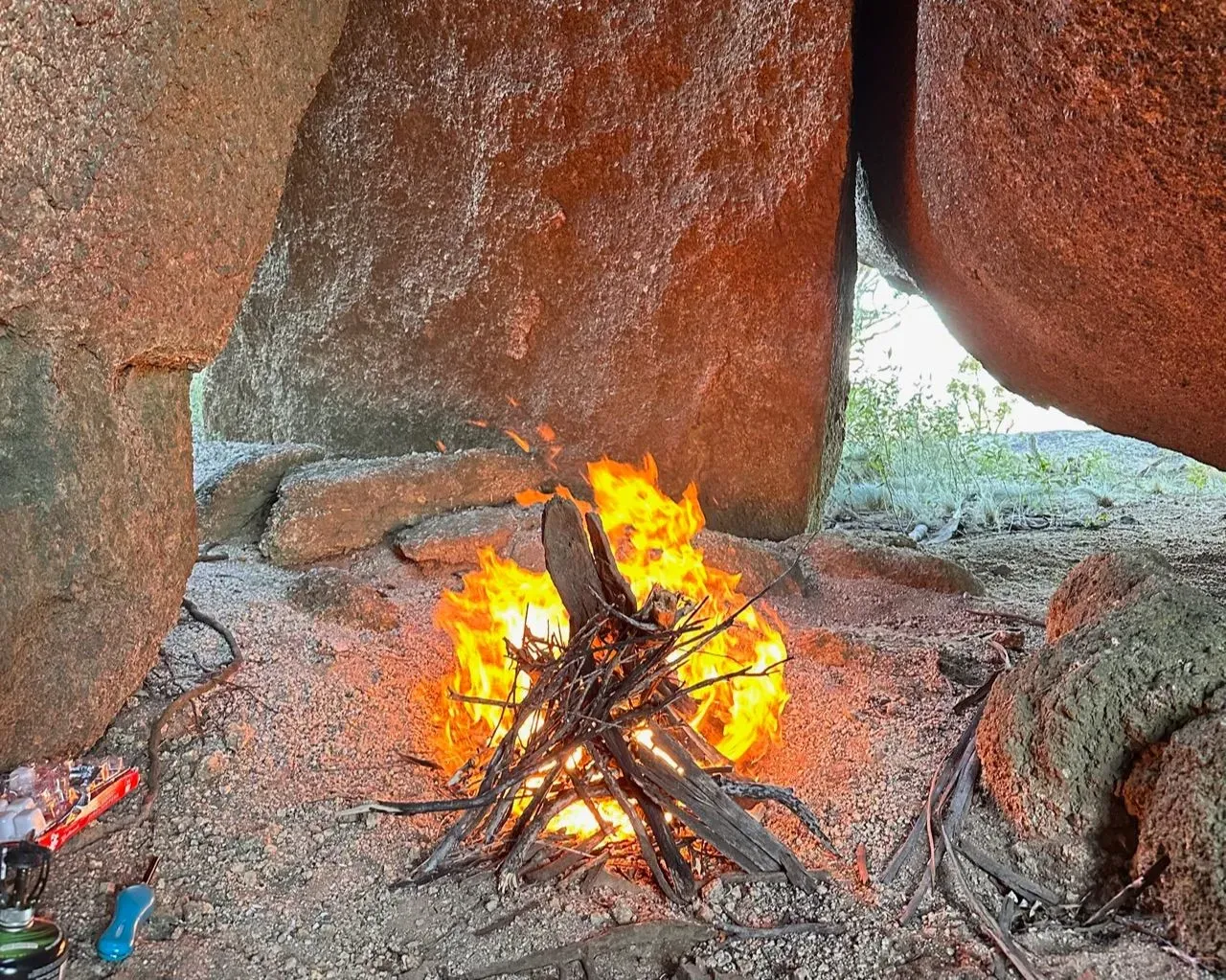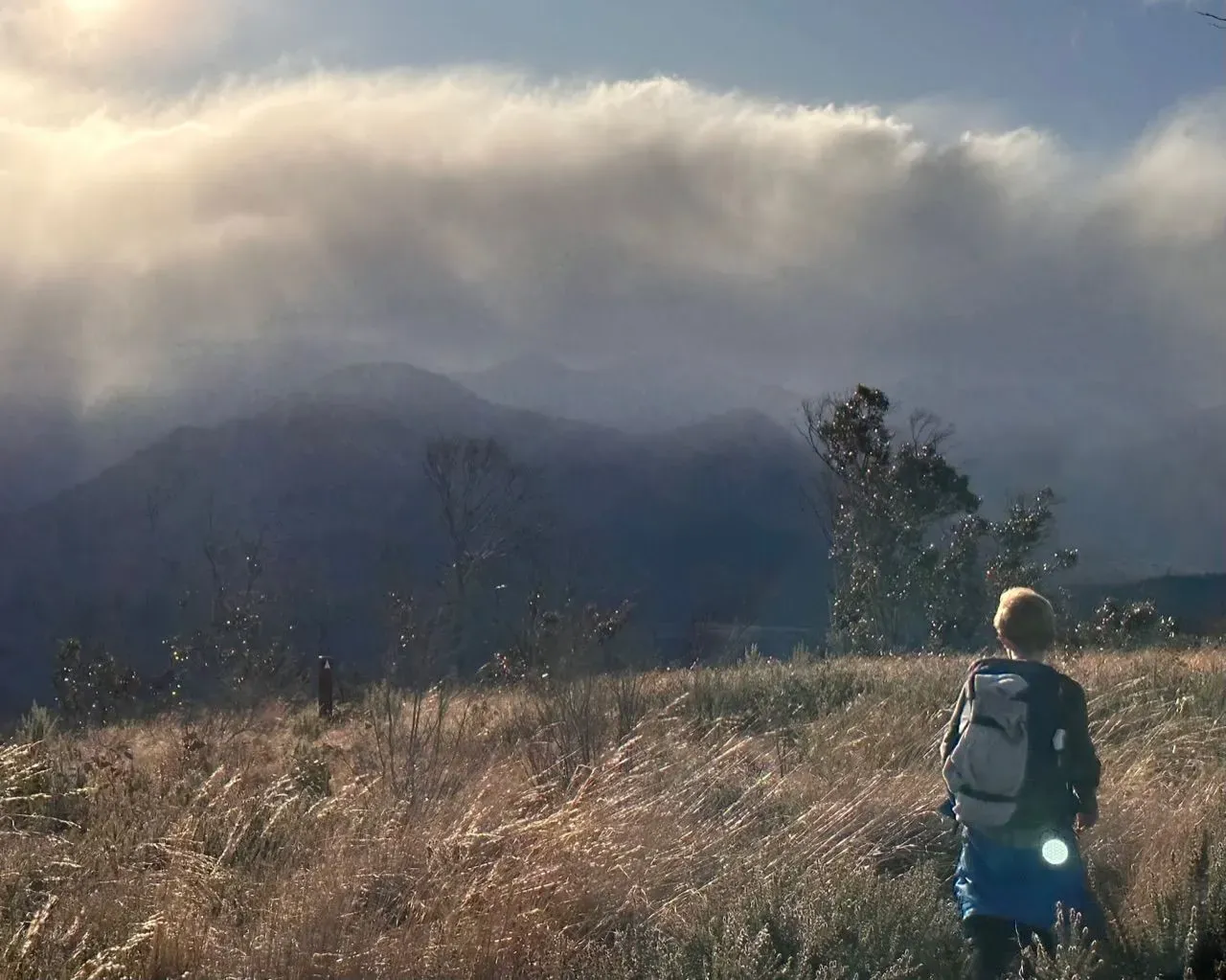For Nat. 11 Years.
I.
Walk the trail ahead of me into the wild country at the southern end of Namadgi. An unprepossessing trail head — the first sign of beauty is the alpine swamp — but the light of the late mid-winter afternoon is already turning the moments golden. The snow grass lies crushed and witnessed by the white and grey piety of the snow gums. And we will sleep among them.
I carry the pack with the tent and food and nearly everything. Your bag has only your sleeping bag and mat. I feel the weight on the steeper sections and you dance ahead. Everywhere you look for sleeping places, any clear bit of grass. You have no sense of the journey — its duration or its destination. I promise that we will come back to these places if there isn’t something better ahead. I know there is.
The trail rises and becomes more and more stoney. The trees reduce in size but gain in stature. Hundreds of years old. Years of frost and fire. Buried for seasons under snow. Burning in a fierce day. The slow, slow growth of endurance then the twisting, cracking, inferno and a slow, standing death. In these mountains there are hundreds of square kilometres of bleached, charred, reaching timber. Two catastrophic fires, both in my time, ravaged the mountain forests. After the 2003 fires, the dead trees were like a white rind on the hills. I used to wonder if they would ever grow back. But slowly, slowly, season by season, there is more green below the white, dead branches.
As the trail rises above the snow line, between the trees grow the plants of the alpine heath, until as the track starts to level and the western sun is pouring over the crest at us, the trees hold their places and leave the heath to stand open to the sky. We come to the trig station at the top of the mountain. You place your stone on the cairn and we walk on.
Abraham, my father, who took your beloved son Isaac and walked with him into the wilderness, who built with him the cairn of stone and gathered the timber from long enduring trees for burning, I did not think of you while we walked over our hill. I delighted in the sun touched grass and the sun touched hair of my boy. I delighted in his delight in the mountains. Although the far range was darkly blued with snowclouds and as we stood on the granite tors drinking in the view of the wild valley below, snow flew from the storm into the sun, so that wind, snow, sun, the ascription of forest, the whirling blue, and smell of rocks cold and sphagnum, and the stinging, livening flakes, gold and grey dark, passed by us proclaiming something of glory. No doom hung over us. No great deed. No test. No righteous-making faith. No trust that I would be given him back alive even while hand raised to take. We dwell in a momentous fullness of provision that means this mountain can be just a mountain and the just be only a Dad and his boy.
II.

We pitched our tent under the lee of a rock on a ledge looking over the valley and sat while the light faded watching the snow fall on the mountain opposite. When you crawled into your sleeping bag, the tent spilled light out over the rock ledge and the lee. I sat in the twilight and drank in the view. And when in the night the wind came roaring up the side of the valley and around the rock, beating the tent even snug in the lee, I changed positions while you slept and lay against the wall of the tent so that its flapping wouldn’t bother you.

The morning was freezing. Wind like a knife. We pulled down the tent and lit a fire in the crevice behind the rock. I exploded two tins of spaghetti and realised I’d failed to bring any cutlery. So we cooked cheese kranskys and ate them with a pocket knife and a folding plastic fork from a cup of instant noodles. I made tea in the tea tins — I’d also forgotten cups — that was half water and half sweetened condensed milk. It was sweet even for me.
III.
Layers matter when walking in winter in the High Country. Something soft and breathable nearest your skin: an open weave cotten singlet. Next a moisture absorbing or wicking layer: a good old flannelette shirt works well. Then thin, fine-knit wool. The layers shouldn’t be more than a total half-centimeter in thickness. And light, not retricting movement. Over this goes a weatherproof shell. You can get by with something cheap as long as its windproof and waterproof.
You can buy thermals, moisture wicking shirts, ultra fine merino, bespoke combinations of elastane and so called “technical fabrics”. Garments sown up with intellectual property and status signalling. I own a few of these things and as much as I’d like to deny it, they are comfortable. At their best, technical fabrics breathe better than basics. This means that water tends to evaporate through the material rather than building up as sweat or condensation on the inside of layers. This is particularly useful for the skin-nearest layer and the outer shell. It makes you feel more comfortable whilst you’re moving. It might also save you from bad windchill if you need to take off the outer layer. But technical fabrics aren’t necessary, layering is what matters. The right kind of layers. Knowing how to wear them. Knowing what they are for.
Watch out for obsession with gear. Gear attempts to make skill and wisdom obsolete. At its best, gear displays the skill of its designer. And the best of us are tempted by gear when it shows us a new way to solve a problem — when it is clever. At its worst, gear is something placed upon the body or overlaid on the world that trades on the beauty of skill to enmesh us in social signalling. Gear insulates us against the lessons that the world might teach. It builds a buffer between us and our mistakes. It makes patience and curiosity surplus. It overpowers rather than works through. It quietens the speech of the world and makes louder our self-consciousness. It enmeshes us more in our social frame.
Instead, pay attention to the world: the quietly held formations of causation and probability that are willing to train the hands and feet of the curious; the quietly held practices of the wise shown while stooping by the shoulder of the young. There is self-forgetfulness in this attention to our teachers. And self-forgetfulness in exercising what we have learned. And yet, we are somehow becoming more securely ourselves in this attentive reception — in receiving what the world gives. Wisdom is marked by joy in finding the way. Certain ways are made known to those who can listen to the speech of the world.
The challenge of wisdom in this age is to live with layers beyond the social frame — to live in an expansive conversation with the world and with God. Skill in living grows out of the conversation between ourselves and the world. Meaning in living grows out of the conversation between ourselves and God. Have both.
It’s ok to have gear but let it be for walking, sleeping, exploring the country, layering effectively, writing well — try to hold it within this stance toward the world.
Also, I’ve never regretted taking along a piece of wire.
